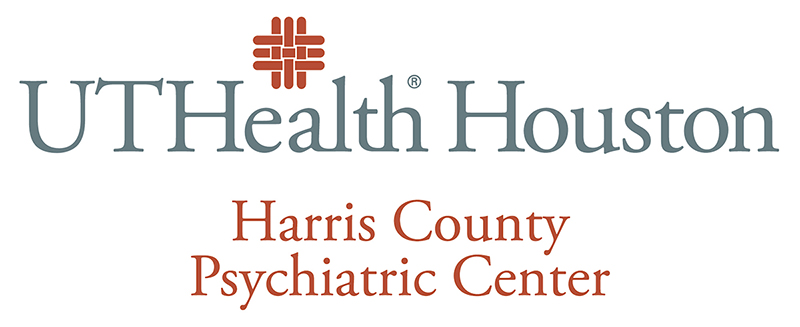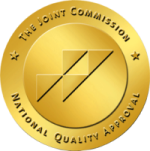UTHealth Houston Harris County Psychiatric Center
Mood Disorders
Types of Mood Disorders • Causes • Signs & Symptoms • Treatments • Medication Therapy • Psychotherapy • Living with Mood Disorder • How Family & Friends Can Help
Feelings of sadness and discouragement are normal emotional
reactions to difficult situations. But when these feelings last
more than a few weeks, or get so bad that they take control of
a person's life, it could be a sign of a mood disorder.
A high percentage of those who suffer from mood disorders could
be effectively treated, and those who are treated realize some
benefit. But many go untreated, largely because they do not recognize
the illness or notice the patterns, blaming the symptoms on flu,
stress, lack of sleep or poor diet. If left untreated, depression
could eventually lead to suicide. If people recognize the symptoms
and patterns early and seek treatment, they can avoid much needless
suffering.
Mood disorders fall into two basic categories: unipolar and
bipolar disorder. Unipolar disorder, known as depression, is
one of the most common mood disorders and can range from mild
to life-threatening. It can appear at any age, and one in five
women and one in 10 men will experience one of the following
forms of depression sometime in their lives.
Clinical depression refers to a condition serious enough to require
professional treatment. A person who experiences severe depression
during a single period is said to have had an episode of clinical
depression. Major depression is marked by more severe or exaggerated
symptoms.
When a person exhibits depressive symptoms, however mild, on a frequent or constant basis, that person likely suffers from a dysthymic disorder. When a major depressive episode strikes someone with dysthymia, it is called double depression.
A more recently identified form of depression - seasonal affective disorder (SAD) - is triggered by seasonal changes, like weather patterns or the amount of available daylight.
Some forms of mood disorders are limited to women. Post-partum depression (PPD) may occur in some women after giving birth. Premenstrual syndrome (PMS) causes mood swings during monthly menstrual cycles. Mood disorders may also occur in women during menopause. In any of these cases, physicians believe that the severe depressions are a sign that another affective disorder already exists.
Bipolar disorder, known as manic-depression, is the most distinct and dramatic of the mood disorders. It is more than just a simple mood swing. Manic-depressives experience sudden dramatic shifts from one emotional extreme, or "pole," to the other, usually with periods of normal behavior between extremes.
The manic phase is marked by feelings of utter happiness and high energy. Feelings of despair and hopelessness are common in the depressive phase. It is estimated that one in 100 people suffer from manic-depression. It generally strikes before 35 years of age. The cycles between the low of depression and the high of mania varies from person to person, as do the other symptoms of manic-depression.
While research has led to a significant understanding of mood disorders, scientists have not found the exact triggering mechanism. Most likely there is no single cause. However, recent studies have linked mood disorders to genetic changes in body chemistry. These changes usually involve imbalances of neurotransmitters (chemicals that allow brain cells to communicate), particularly serotonin and norepinephrine. Bipolar patients often also respond to certain hormones in a way that indicates there are irregularities in how these hormones are produced and released.
Close relatives of people with mood disorders are sometimes more likely to develop either depression or manic-depression than the general population. Other factors, such as negative family relationships, serious illness, major loss or change, and substance abuse, can cause or complicate depression. Even gender and sensitivity to seasonal changes can play a role in mood disorders.
People who suffer from mood disorders will likely display one or more of the following behaviors:
- Feelings of worthlessness, hopelessness, helplessness, total indifference and/or extreme guilt
- Prolonged sadness; unexplained crying spells
- Jumpiness or irritability; withdrawal from formerly enjoyable activities or relationships
- Inability to concentrate or remember details
- Loss of appetite or great increase in appetite; constant fatigue, insomnia
- Physical ailments that cannot be explained otherwise
- Thoughts of death or suicide attempts
In addition to depressive symptoms, people who suffer from manic-depressive disorder will likely display one or more of the following behaviors during the manic phase:
- Excessively euphoric or expansive mood
- Irritability and anger that is inconsistent with the situation
- Hyperactivity
- Grandiose ideas or delusions; extreme optimism
- Lack of good judgment
- Flights of ideas or racing thoughts; talking in a rush and changing from topic to topic; disorganized thoughts
- Decreased need for sleep
- Sudden rage, irritability or paranoia
Mood disorders are some of the most treatable of all mental illnesses. Nearly all of those who receive treatment experience some benefit. Before treatment begins, patients should seek a full medical evaluation to rule out any other mental or physical disorders which could mimic mood disorders. Like many other mental illnesses, mood disorders are usually treated with medication, psychotherapy or a combination of the two. Patients can usually see relief of their symptoms in just a few weeks.
Antidepressant medications are used to correct imbalances of certain neurotransmitters. Five groups of medications are most often prescribed for depression: tricyclic antidepressants; monoamine oxidase inhibitors (MAOIs); selective serotonin reuptake inhibitors (SSRIs); and serotonin and norepinephrine reuptake inhibitors (SNRIs); and other atypical anti-depressants.
The effectiveness of antidepressant medications depends on a person's overall health, weight and metabolism, and other unique physical traits, and they are usually prescribed to fit the individual. If one medication doesn't work, the physician may try another or a combination of medications to determine the most effective regimen. Generally, antidepressants become fully effective within three to six weeks.
Psychotherapy involves the verbal interaction between trained professionals and patients. The therapist uses techniques to help the patient gain personal insight that will allow him or her to positively change thoughts, feelings or behaviors.
Several forms of this "talk treatment" have proven to be helpful in the treatment of mood disorders. They include: interpersonal psychotherapy, cognitive-behavioral therapy, psychoanalysis and psychodynamic psychotherapy.
Other forms of therapy are electroconvulsive therapy (ECT) and light therapy. While its use has decreased as more advanced medications have been developed, ECT remains very effective for treating patients who cannot tolerate or take medications due to medical conditions, old age, malnutrition, or those who do not respond to antidepressant medications. Light therapy is used primarily for those who suffer from seasonal affective disorder. Patients using this treatment spend regular therapeutic sessions bathed in light from a full-spectrum light source.
Like many other mental illnesses, mood disorders can be destructive if left untreated. The depressions can complicate relationships, especially with close family and friends. A victim's employment and financial standing are also at great risk. They can even result in suicide. Mood disorders can make a person feel fatigued, worthless, helpless and hopeless. It is important to realize these feelings are a result of the depression and do not accurately reflect a person's true situation. Until treatment takes effect, a person suffering with serious depression should:
- limit commitments;
- set realistic goals and expectations;
- spend time with other people;
- participate in enjoyable activities;
- seek the advice of close friends or family before making important decisions;
- realize they will not "snap out" of their depression;
- think positively and reject negative thoughts.
How Family and Friends Can Help
The most important thing family and friends can do for the depressed person is to help him or her get treatment. This may involve encouraging the patient to stay with the treatment, going with the patient to the doctor, or even monitoring whether the patient is taking medication.
Another important way to help is to offer emotional support - understanding, patience, affection and encouragement. Always listen to the depressed person. Do not ignore any remarks about suicide; report them to the doctor immediately.


